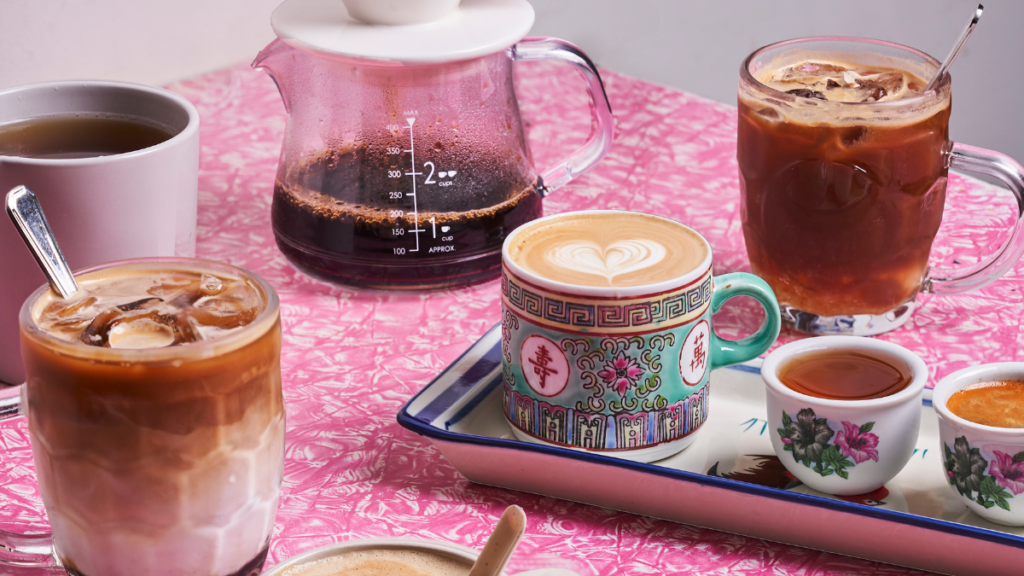Singapore is a country profound with the Peranakan culture. “Peranakan” generally refers to a person of mixed Chinese and Malaysian or Indonesian heritage. Often associated with vibrancy, Peranakan heritage instills a sense of rich cultural history. The Peranakan community has a deep history with their palates, which played a big role in preserving local culture. While modern coffee and bar establishments grow in popularity, Lou Shang stands to its roots and draws inspiration from Singaporean culture.
EnVi chatted with Jared Ong, co-founder of Lou Shang, on the cafe’s Housing Development Board (HDB) concept and the surrounding community, Peranakan cultural traditions, and the local gastronomy.
The Idea of Lou Shang
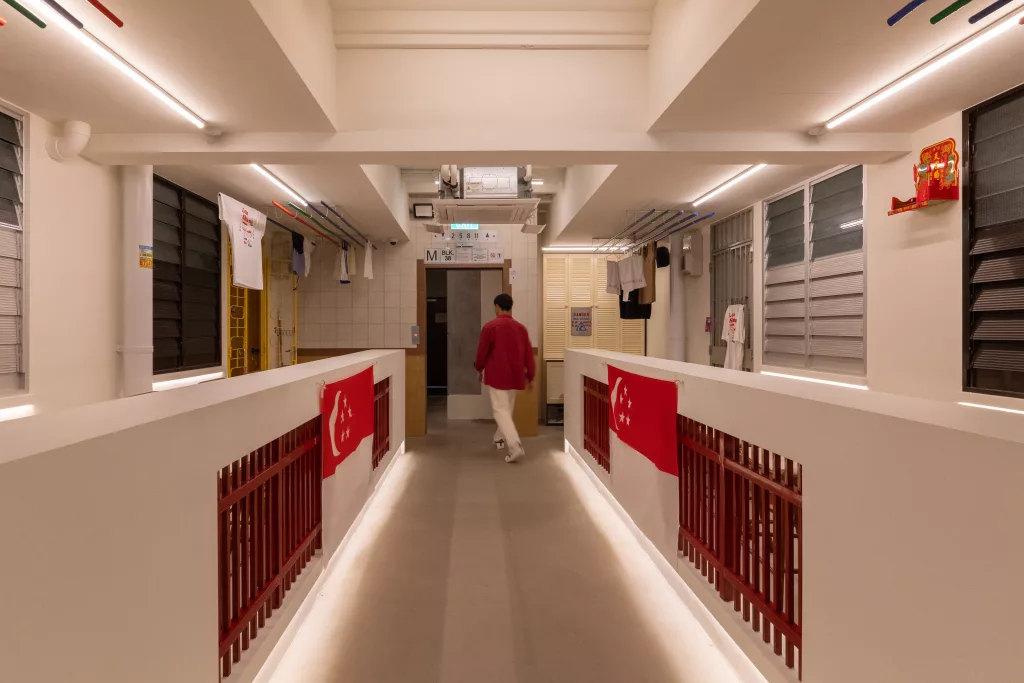
Tucked away on Prinsep Street in Singapore lies the quaint facade of Lou Shang. This duo concept joint serves as a cafe during the day and a speakeasy bar at night. The name Lou Shang, which translates to “upstairs” or “second floor” in Mandarin, refers to the floor of the shophouse where this combination cafe and cocktail bar is situated.
Lou Shang is inspired by the local HDB in Singapore. “These houses, which are the main residential place for citizens, were very popular back in the ‘80s and ‘90s,” Jared Ong told EnVi. HDB houses still exist in the older neighborhoods of Singapore.
Lou Shang is located upstairs next to Mama Diam, a speakeasy bar, camouflaging as a mamak shop. Mamak shops are generally located on the ground floor of HDB houses and are convenience stores that sell almost all the daily needs.
Lou Shang adopted the concept of mamak shops into their design. The day cafe and night cocktail bar wanted to incorporate that experience for customers, guiding customers from the mamak shop on the first floor to entering their respective houses on the second floor. In this case, their customers will go through Mama Diam and then enter Lou Shang.
Waltzing Into Lou Shang
Visitors will first encounter a mamak shop on the ground floor before Lou Shang. Upon entering the shop, visitors will be greeted by the iconic “Good Morning” towel.
To preserve the culture, Lou Shang shows the concept of HDB housing neighborhoods and how the residents lived and communicated back then. “Each unit in Lou Shang represents different cultures that lived in Singapore,” Jared Ong told EnVi.
Residents back in the day used to come out of the unit to play, share food, read magazines, or discuss common interests with neighbors. “The culture was very tight back in the days. It’s sad to see them slowly diminishing,” he said.
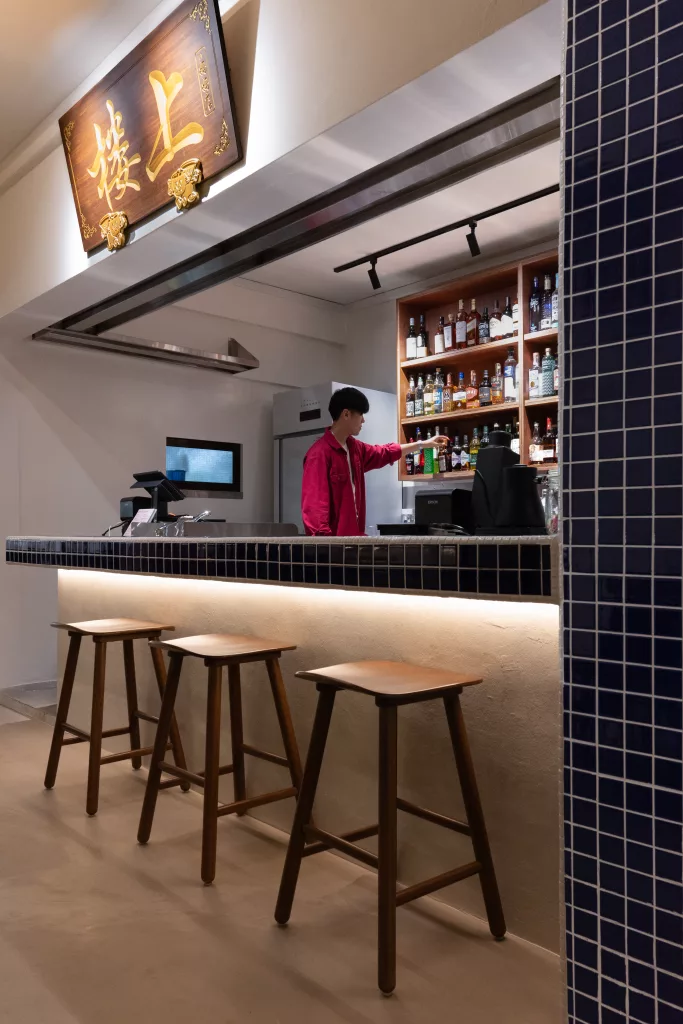

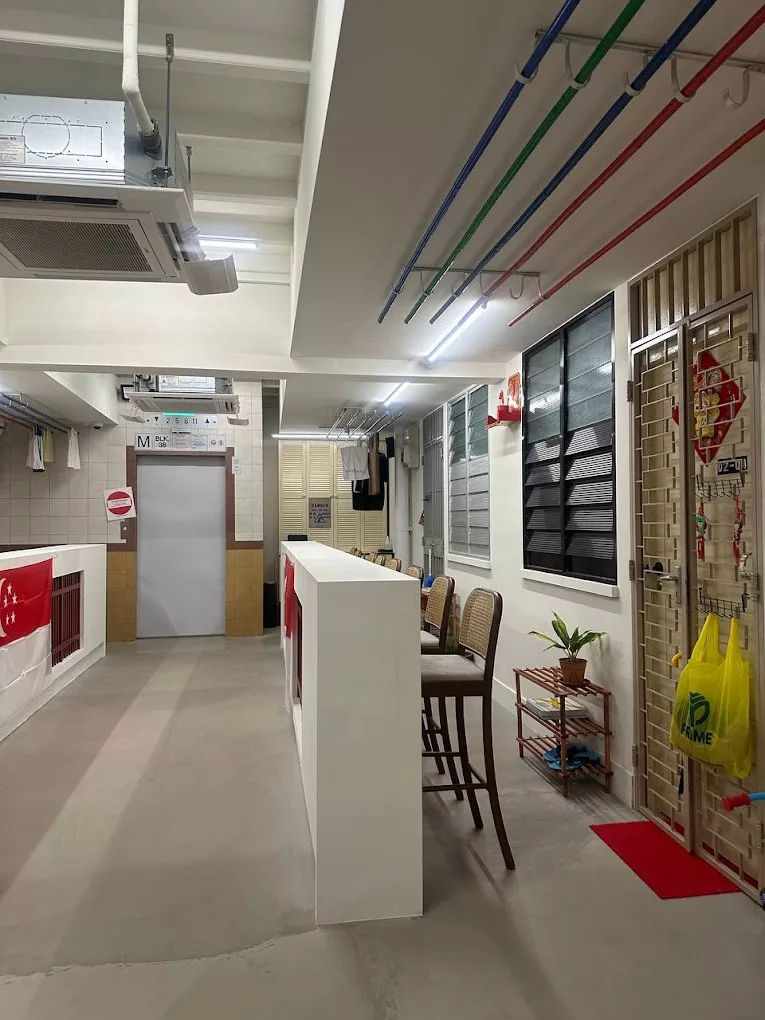
Tutu Kueh
Food is a social and cultural medium that shapes people’s beliefs, values, and traditions. At Lou Shang, the menus are inspired by the local cuisines.
Tutu kueh, which is one of Lou Shang’s iconic dishes, is a unique snack known for its traditional preparation and cultural significance. It’s a steamed rice cake filled with either sweet grated coconut or ground peanuts, often flavored with pandan leaves for a fragrant touch.
“What makes tutu kueh distinct in Singapore is not only its taste but also its heritage. It’s a beloved traditional snack often found in local markets or street food stalls, showcasing the country’s multicultural culinary landscape,” said Ong.
Tutu kueh is connected to holidays, festivals, and even religious rituals among various Singaporean communities, such as Hari Raya Puasa for Muslim communities and Diwali for the Indian community. “Its availability and presence in various cultural events have solidified its status as a cherished and important snack in Singapore,” he said. Back in the 1970s, tutu kueh was sold in public spaces such as Chinese opera sites, hawker centers, and amusement parks.
“The process of making tutu kueh involves intricate layering of rice flour and filling into small metal cups before steaming, resulting in a delicate, fluffy texture,” he said. At Lou Shang, the tutu kueh has a coconut mousse exterior with vanilla chiffon and contains gula melaka (palm sugar) inside.
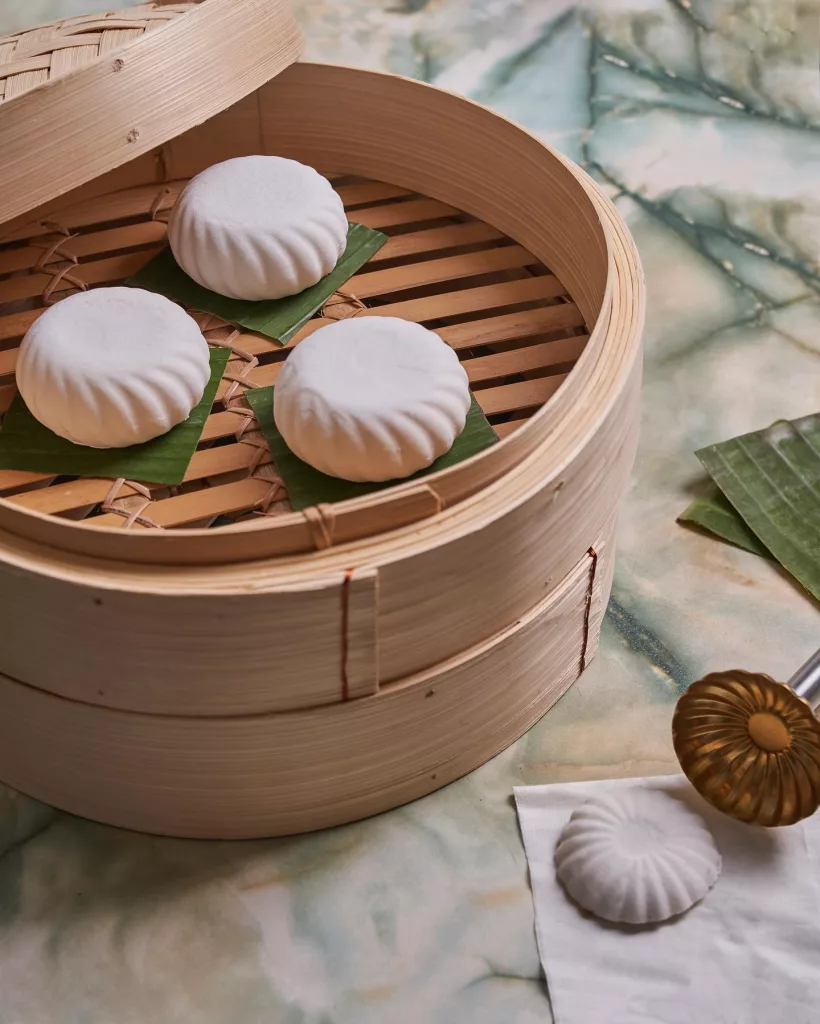
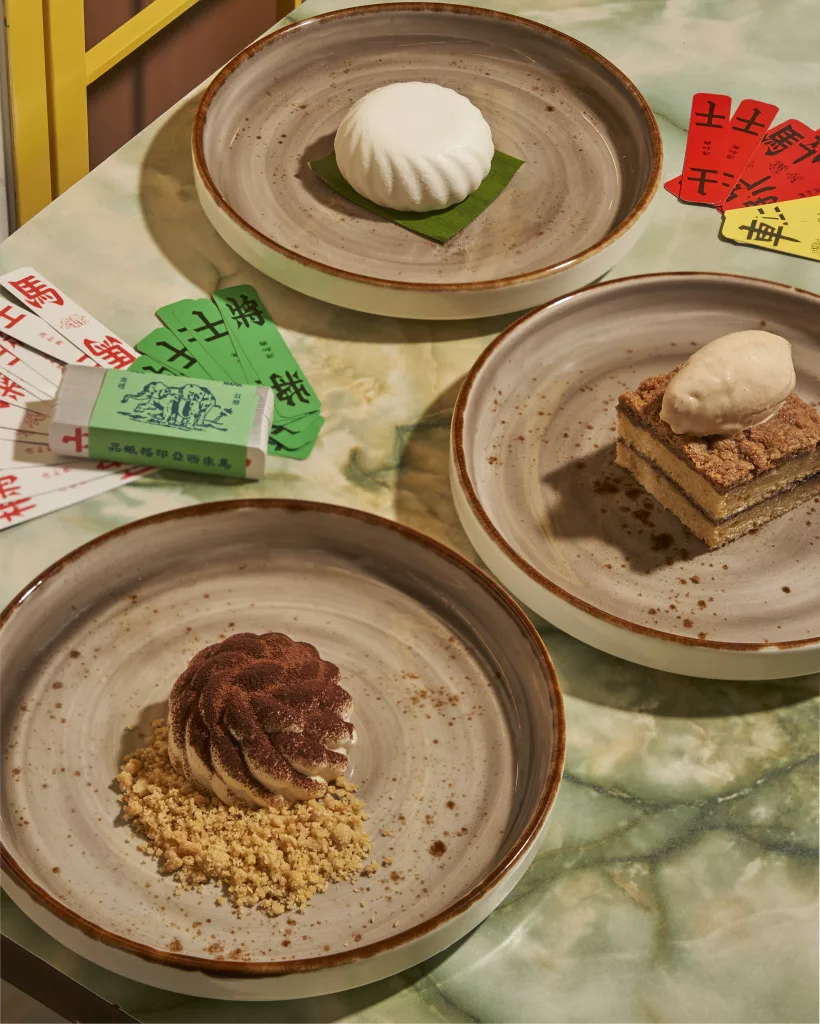
Breakfast and Chatters at Lou Shang
The nostalgic vibe of Lou Shang feels like a warm embrace, especially at breakfast time. The smell of toast and fresh coffee wafts through the air as customers file in. Kaya toast, a popular dish of toasted bread with butter and kaya (coconut jam), is the focal point of Singaporean breakfast culture. It is typically served with soft-boiled eggs and a hot beverage like coffee or tea. This is typically consumed at neighborhood coffee shops called kopi tiam.
Lou Shang serves Singaporean breakfast with a twist: toasted rainbow butter bread usually used in Singaporean ice cream sandwiches, kaya, chocolate, milk, and bandung custards, and soft-boiled eggs all served in a tingkat (stacked food containers). Enjoy by dipping the bread into the eggs or the custards.
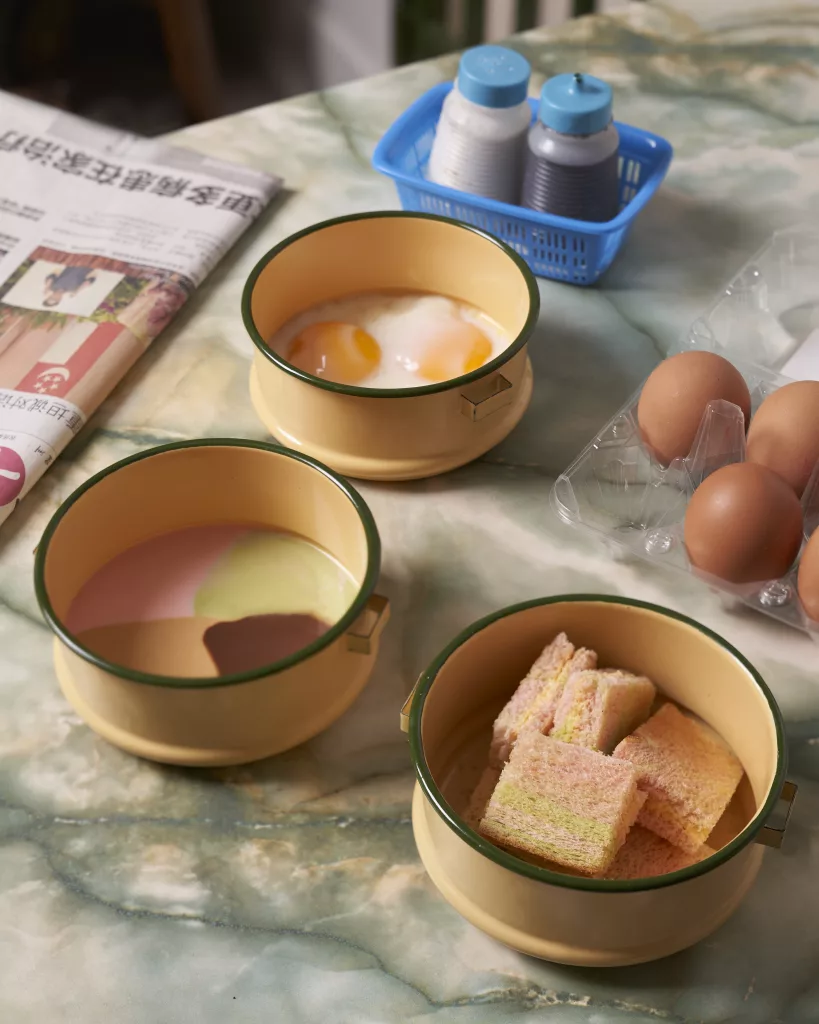
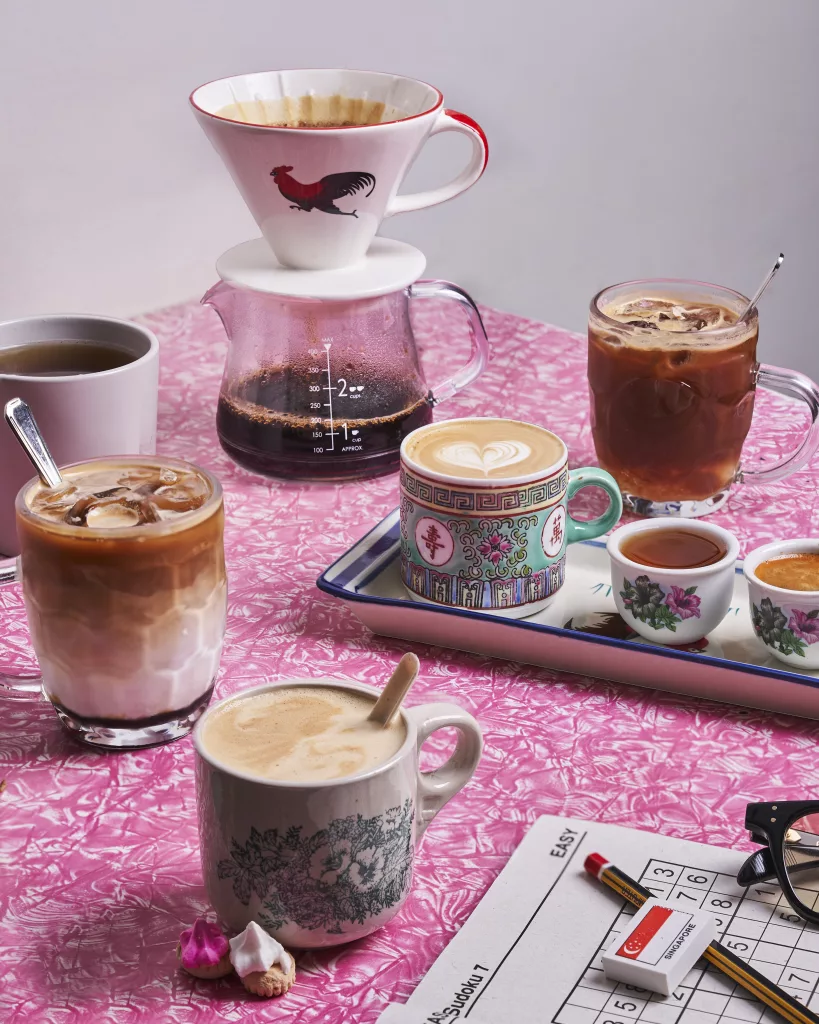
Sentimental Cocktails
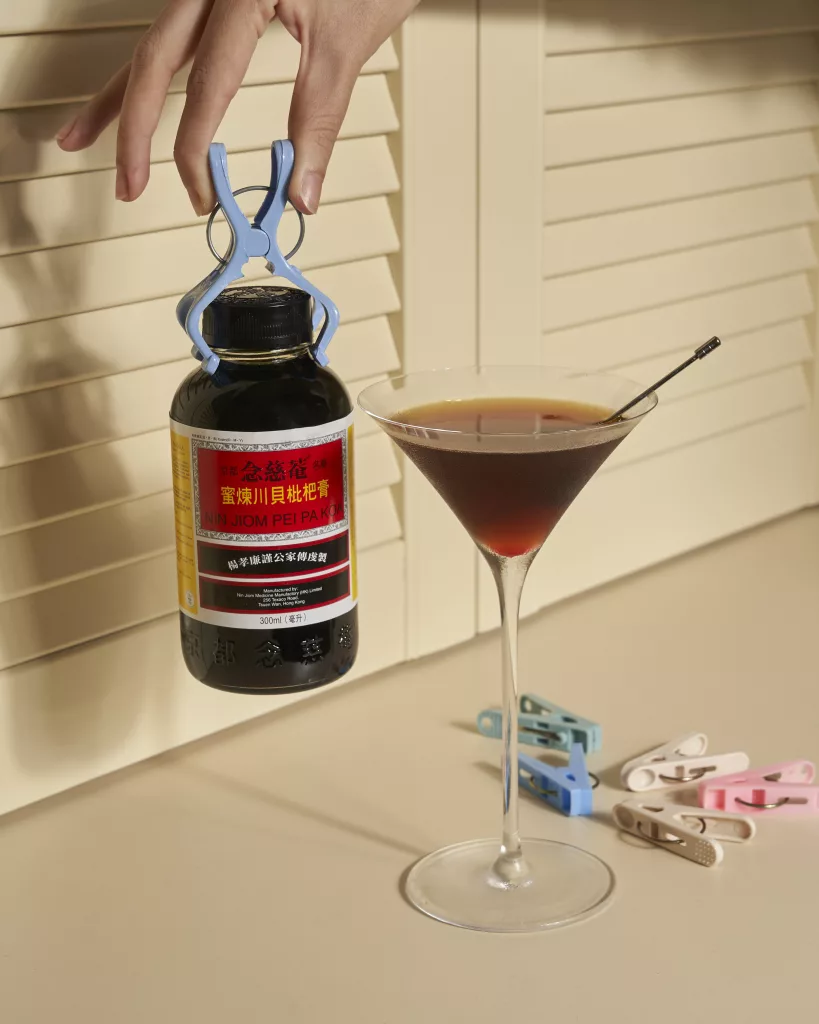
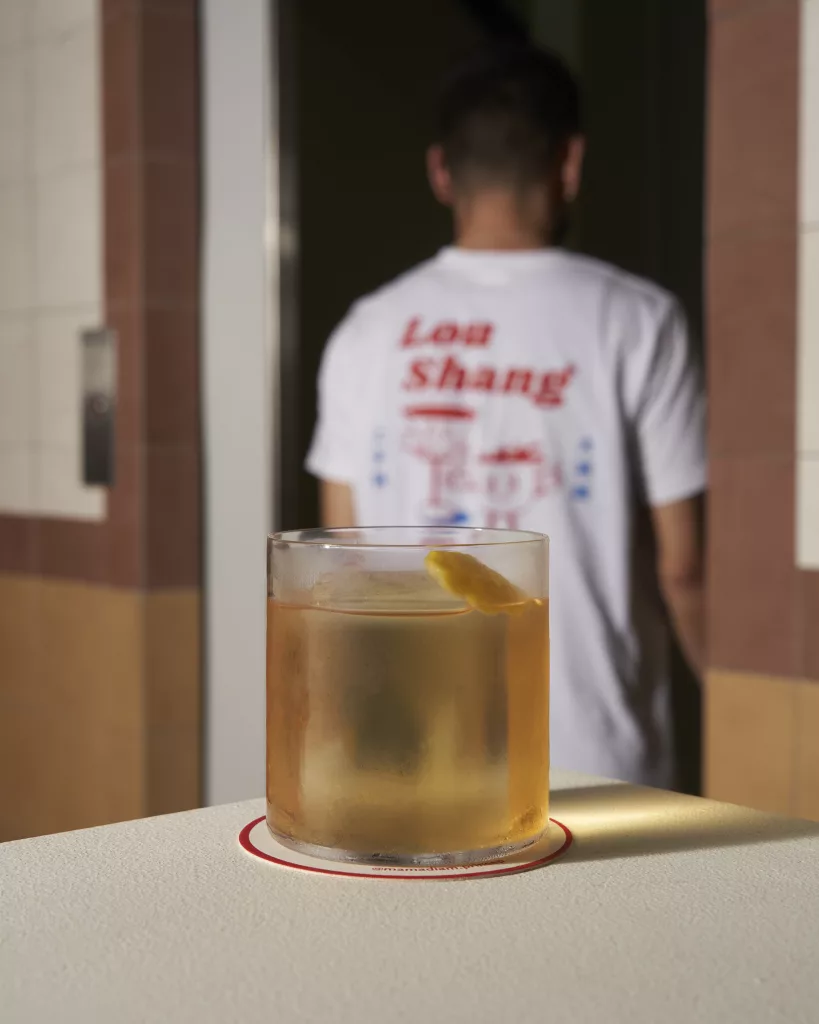
Lou Shang’s bar manager Hex draws their cocktail inspirations from the essence of “home.” They serve these cocktails for their customers to go on a sensory journey through Singapore’s vibrant flavors including lavender, kaffir lime, and warm spices. The aroma will transport them back to enjoyable, busy hawker markets.
The cocktails have various names that also center on “home” including “At Home,” “Coming Home,” and “House Party.” Other cocktails draw inspiration from experiences one might have at home in Singapore like “Raspberry Ripple,” which was inspired by the popular ice cream flavor sold by vendors on the ground floor of HDB. Take a sip and enjoy the comfortable feeling of the city’s surroundings in a glass.
One unique cocktail on the menu is 3 Times A Day, from the “Staying At Home” series, which uses Pei Pa Koa, a traditional Chinese medicine for cough. The name “3 Times A Day” refers to how many times an adult should consume the medicine.
Lou Shang-Style Chilli Crab
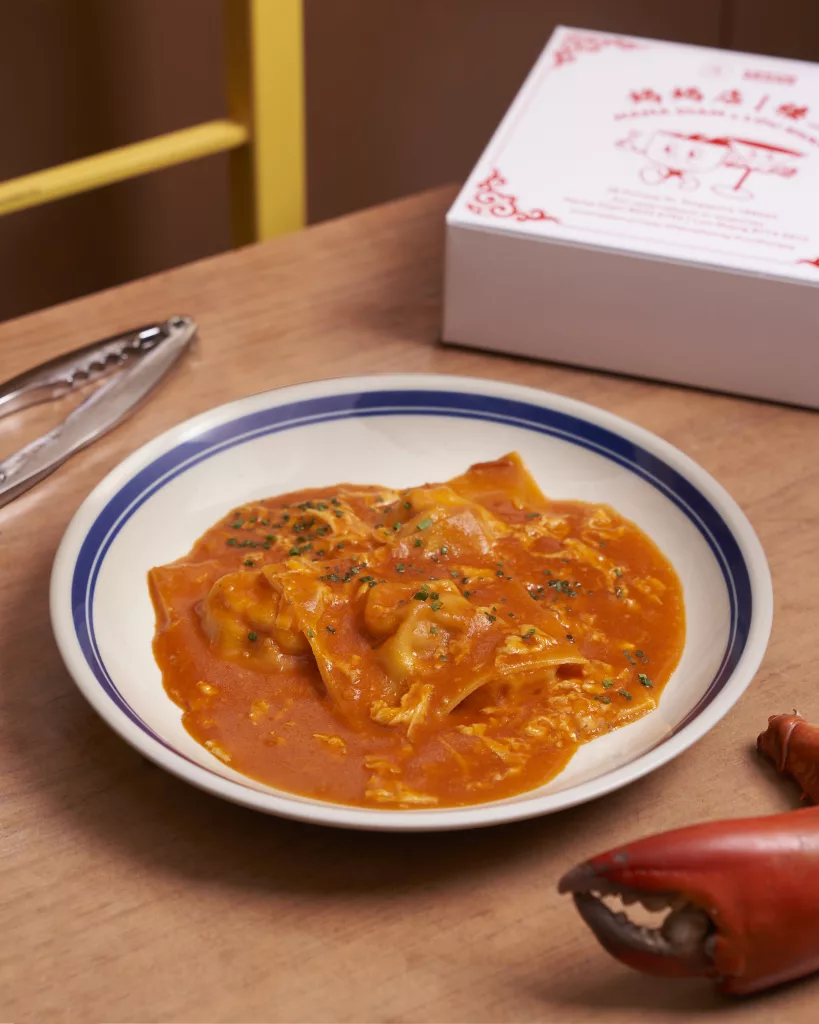
Singaporean Chilli Crab is the nation’s most popular seafood dish. This dish is a deep-fried mud crab with sweet, savory, and spicy gravy. At Lou Shang, the dish is elevated with handcrafted ravioli, mixed with a blend of succulent crab meat. “With every bite, the classic spicy seafood delight from Singapore melds harmoniously with traditional Italian flair to create a flavorful experience that entices the palate,” said Ong.
“Lou Shang is more than just a cafe and bar; it’s a tribute to the cherished memories of HDB living, a celebration of community, and a homage to the places we call ‘home,” Ong said.
Regardless of the occasion, the nostalgia calls for a return visit. From the aroma of coffee to the vibrant interior, Lou Shang greets those who are in search of a taste of home, but with a modern twist.
Looking for more articles that highlight small businesses? Check out our Small Business Spotlights here!
